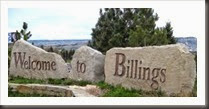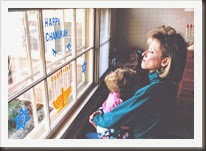 I had never heard of Billings, Montana until late December last year and had to search for its location on a map.
I had never heard of Billings, Montana until late December last year and had to search for its location on a map.
My interest in the north-western American city was sparked by the re-telling of a once well-known story about a spate of anti-Jewish attacks there during Chanucah, 1993. But the tale of hate and redress is not nearly as straightforward as it first appears.
 Different reports estimate that in the early 90s no more than fifty Jewish families lived in Billings. Moreover, while Montana Jewry had thrived during the 19th century gold rush and the development of the railway, the population had since dwindled and barely 1,000 Jewish people lived throughout the entire state.
Different reports estimate that in the early 90s no more than fifty Jewish families lived in Billings. Moreover, while Montana Jewry had thrived during the 19th century gold rush and the development of the railway, the population had since dwindled and barely 1,000 Jewish people lived throughout the entire state.
But none of this prevented white supremacist thugs breaking widows in private homes and committing other hate-inspired vandalism on any targets daring either to display a menorah - Chanucah candelabrum - or to support the Jewish community in other ways.
Still, other local citizens were not prepared to let this go unanswered and a smashed window at the house of convert to Judaism, Tammy Schnitzer and her then-infant children, Isaac and Rachel, triggered a huge wave of sympathy.
It started with a feisty editorial in the local Billings Gazette which also published an image of a menorah for readers to cut out and stick on their own windows in solidarity with their Jewish neighbours. Then came an avalanche of help from many different individuals in the wider community and the attendant publicity included a picture spread in Life magazine and two documentary films.
Not in Our Town by Californians, Patrice O’Neill and Rhian Miller won a prize and the two films together produced similar inter-community tolerance campaigns in many other American cities. Further, Billings’ city fathers were honoured at the White House while the city itself received awards from major Jewish organisations. Then there was the now celebrated book and children’s play based on the incident by psychotherapist, Janice I Cohn. Indeed, it was her story that I heard during Chanucah last year and which led me to research this piece.
Twenty-one years – almost a generation – have passed since the above events occurred so I decided to examine the ‘back story’. Superficially, it was a heart-warming tale of seasonal goodwill. But why did it happen during a time of generally little anti-Jewish activity? And why, Cohn’s play aside, has it largely been forgotten?
The truth is that the Jewish community was only one minority community targeted; that the racists behind the outrages also victimised local black and Native American homes and that about 10,000 Native Americans then lived in Billings against a Jewish community of only several hundred.
So the campaign started by and then promoted on behalf of the Jewish minority was successful largely because its members were perceived as attractive, articulate and educated - similar to the surrounding white non-Jewish majority population. The other minorities were not so well-organised; became somehow excluded and this was discomforting for the campaigners.
Indeed, in 2008 when Billings people renewed their anti-hate initiative for the 15th anniversary of the national tolerance campaign that had started in the town, the Jewish Telegraphic Agency reported that it was planned and held with very little Jewish input. It was said that Jewish residents had become media shy and that anyway, isolated Jewish communities generally preferred to blend into surrounding American society.
Tammy Schnitzer had meanwhile moved far away to South Carolina and returned to her old town just for the anniversary.
A seasoned human rights campaigner, she agreed that her candour had unsettled her family. She admitted that she had always felt uneasy with the way the attack on her home was presented solely as a Jewish concern. “It was an … issue that left behind a lot of inconvenient truths … I lost friends, people judged my motives. I wish others in the Jewish community had stepped in a little more quickly”, she said.
 So I’ll give the final word to Uri Barnea, an Israeli-born rabbi and musician who has become a US citizen and was conducting the Billings Symphony Orchestra when the attacks began in November 1993.
So I’ll give the final word to Uri Barnea, an Israeli-born rabbi and musician who has become a US citizen and was conducting the Billings Symphony Orchestra when the attacks began in November 1993.
He has also since moved from Billings but reveals that he suffered harassment, including death threats, when his background became known. Eventually he won an out-of-court settlement against the white supremacists who were ordered to leave town. However, the harassment did not cease until some years later.
“If I’d decided not to (report) it because of the danger”, he told the JTA, “I’d give strength to the perpetrators. “You can’t prove it, but to a certain extent the town’s reaction had something to do with the slowing down of attacks”.
 This piece first appeared in the February 2015 edition of Live Encounters magazine (http://liveencounters.net/?p=9643) edited by Mark Ulyseas, a faithful supporter of Israel and all matters Jewish.
This piece first appeared in the February 2015 edition of Live Encounters magazine (http://liveencounters.net/?p=9643) edited by Mark Ulyseas, a faithful supporter of Israel and all matters Jewish.
© Natalie Wood (21 January 2015)
No comments:
Post a Comment